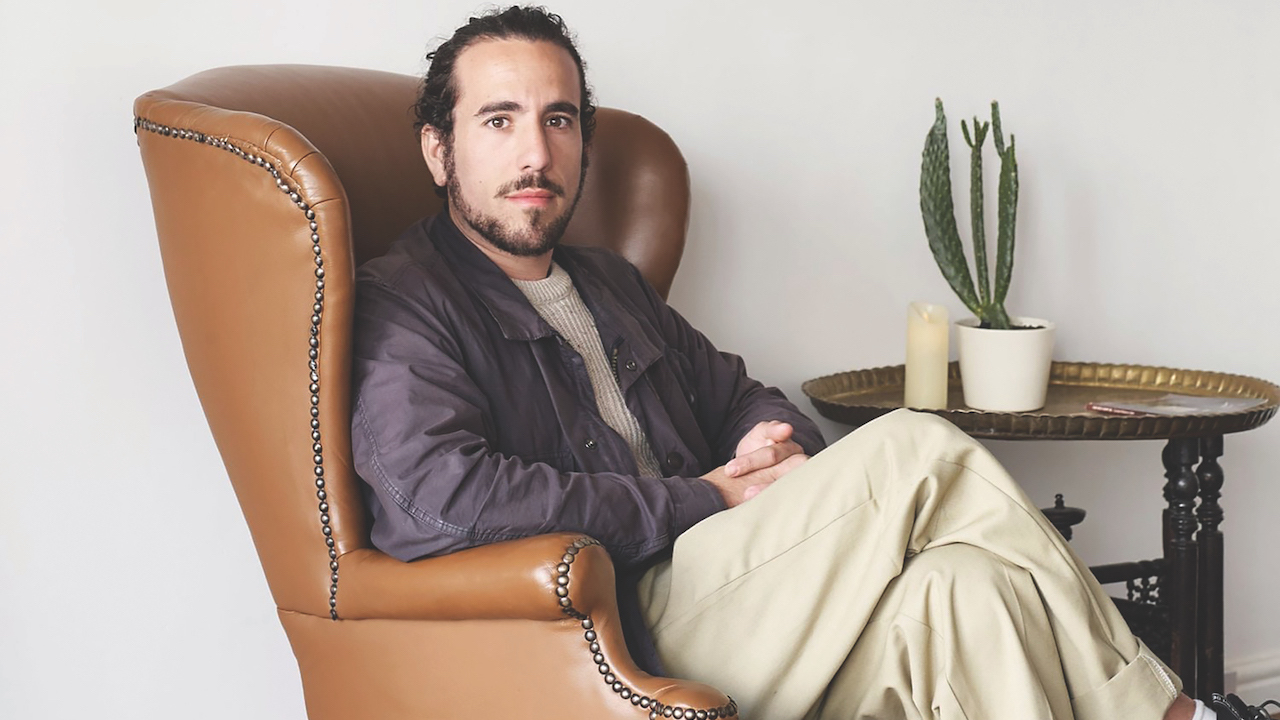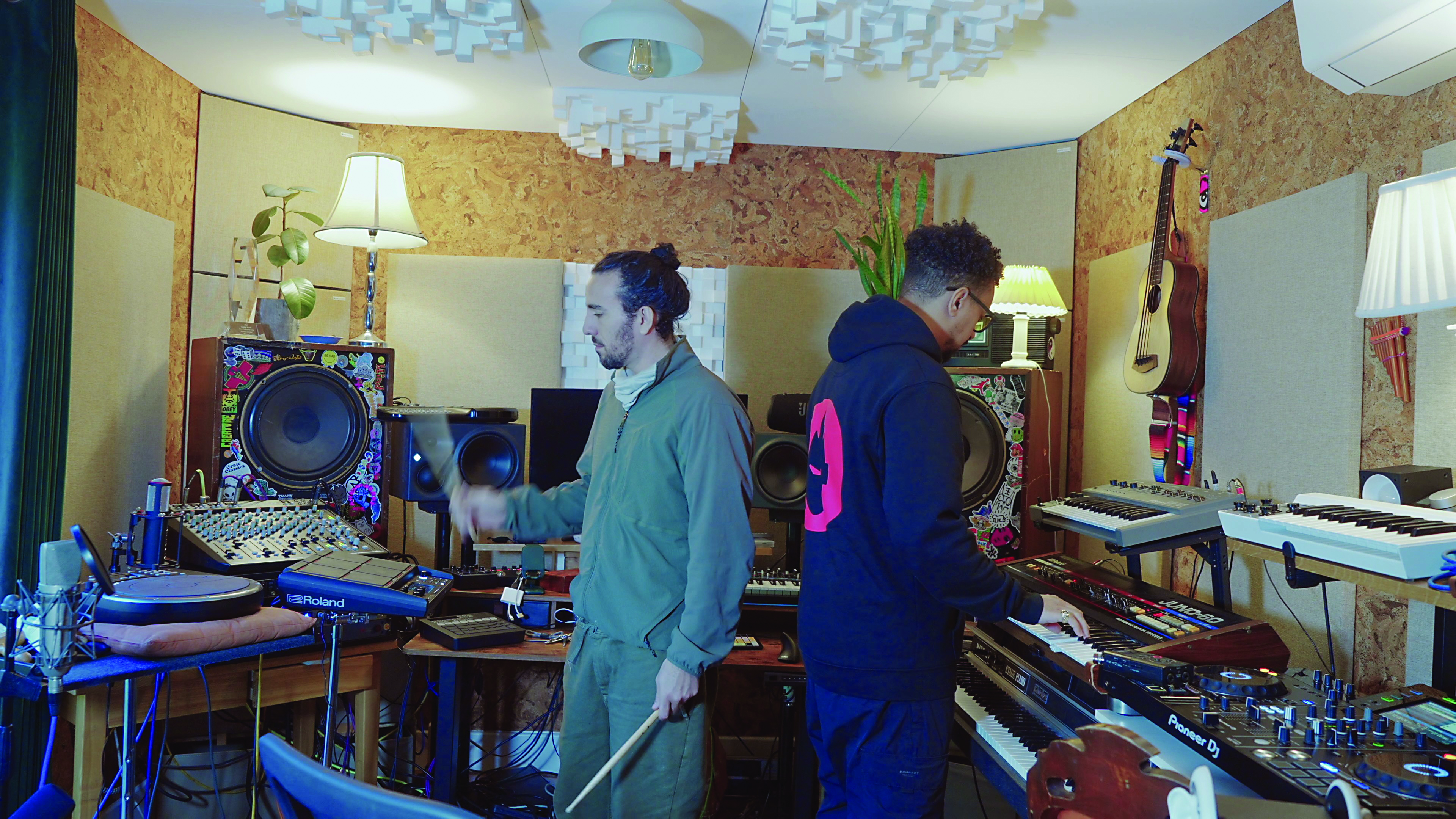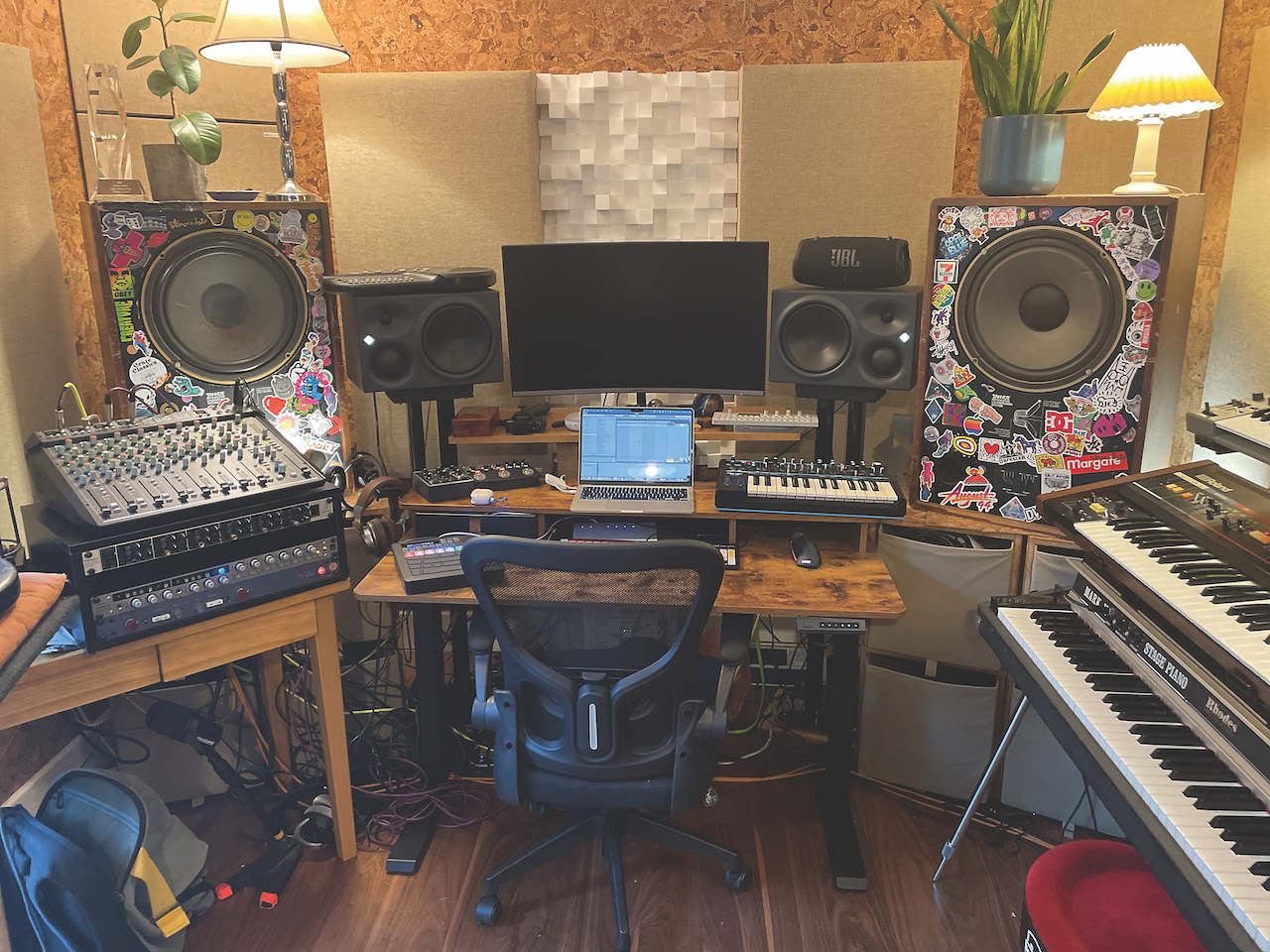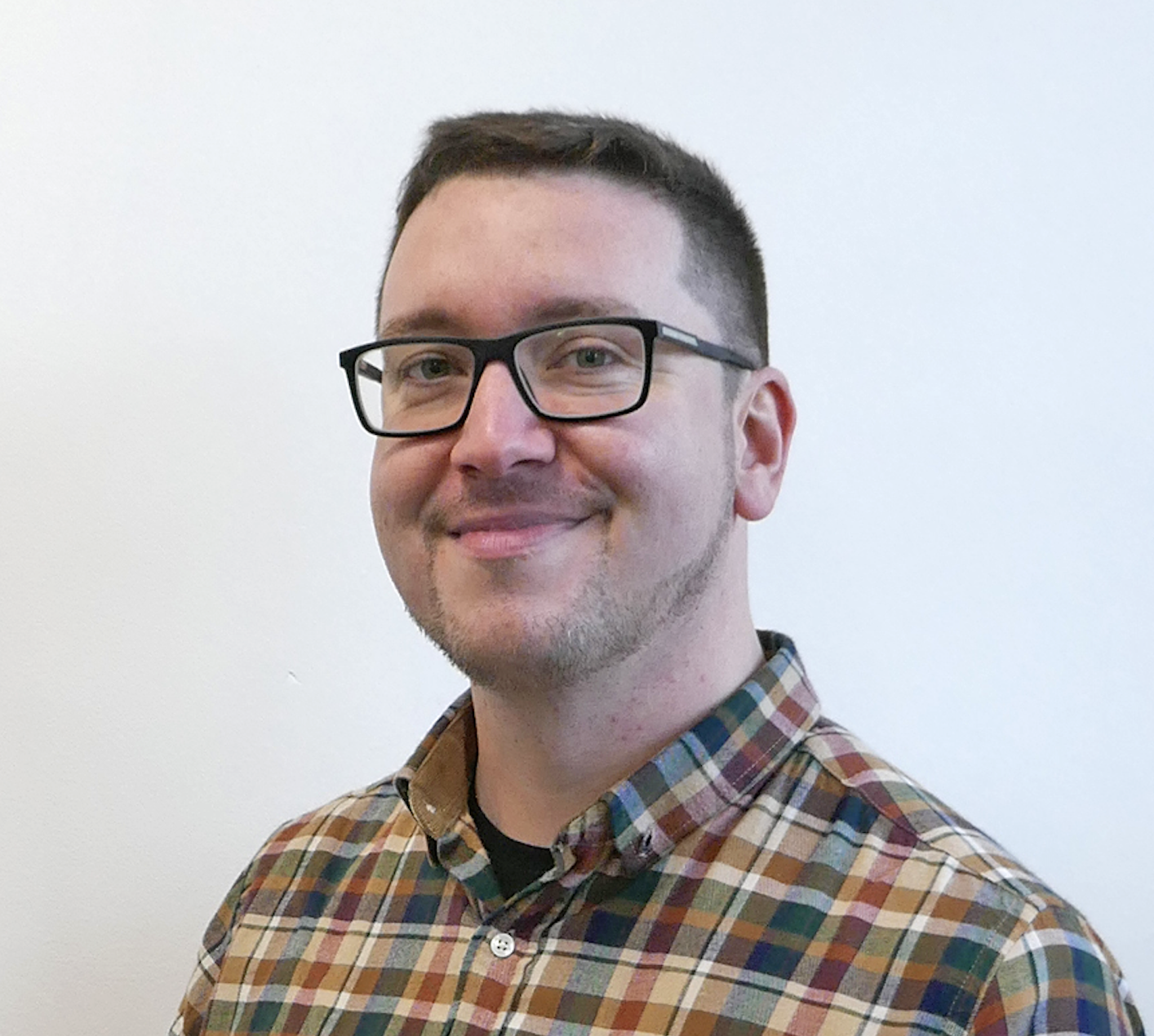Aaron Horn: "My dad banned me from all the studios as a little kid. Every kid just wants to hit a load of buttons, don’t they?"
Stepping out of the shadow of his legendary father, Trevor, Aaron Horn has charted a unique course across the music industry, from producing for Doja Cat to mastering sound meditation

Being the son of a music production titan like Trevor Horn you might think that Aaron Horn’s upbringing was one of early indoctrination into the art of fader-riding.
As we discovered in our chat with the multi-faceted artist and producer, that was not the case. Despite being banned from his father’s studio for wanting to “push all the buttons”, the beat-obsessed Aaron has gone on to have a varied career. With his band Sam and the Womp, he achieved sudden success, most notably with the head-bopping Bom Bom which topped the charts in 2012.
Following his departure from that outfit, Horn co-wrote the globally successful Woman with Doja Cat, and has recently been exploring sound meditation. Music as a functional part of the therapeutic process is a massive part of Aaron’s current creative mindset, juggled with his role in jungle duo Crate Classics and his sonically diverse solo work.
Can you talk us through how you first got into music-making?
“Well it was mainly through hip-hop. I got really into hip-hop and [its] instrumental scene in my teens. I wanted to get some turntables, but my dad didn’t think they were a ‘real’ instrument, so he forced me to learn the drums. Which was cool. When I was old enough to buy my own turntables I bought a set of Technics. That was it, I got deep into scratching and sampling and that turned into making beats. I managed to steal one of Dad’s old MPCs and I was sampling into that for a while. That was like the beginning really. I got into trip-hop and loved that sampling sound.
“Obviously, I was around music production from a super young age, with my dad being who he is. But I saw it as a bit of a nightmare. When Pro Tools came in I was around 10 and was on family holidays with Dad when he was having trouble with the early version of it. It looked like hell. I was disallowed from the studio at a young age and, yeah – I wasn’t interested in the studio at all. It looked complicated. But then once I got the turntables and I got the DJ mixer, I started to realise that the massive desks were basically DJ mixers with more detailed EQ and sends. I got a bit more into it at that point.
“I started moonlighting at Sarm Studios a bit, I’d get in there late at night to listen to some of the beats I was making. I’d try to record things in my downtime. When I first started making beats, Trevor didn’t want anything to do with them; he thought they were terrible! They probably were quite bad, to be fair. I guess things changed at a certain point because I really got into Ableton Live after DJing and working with the MPC for a while. I got quite good with it. There was a point where he started to appreciate and understand what I was doing a bit more. We still like a good argument about music and production and stuff!”
Get the MusicRadar Newsletter
Want all the hottest music and gear news, reviews, deals, features and more, direct to your inbox? Sign up here.

Having a dad like yours, I imagine the house was pretty musical growing up. Did you know you’d end up working in that domain?
“I think every kid just wants to hit a load of buttons, don’t they? So Dad banned me from all the studios as a little kid. We had some great sound systems around, of course, so Dad introduced me to a lot of artists, like Kate Bush and odd records that he loved. I used to be quite into rap music when I was very young and my parents were very against that. There was a kind of duality to it, I guess, when you’re more involved with something there’s more of a taste or disdain for certain things. I had an old piece of software called Rock, Rap ’N Roll when I was very young. It was a loop-based program, but I was banned from that, too!”
Your career right now seems quite eclectic. Do you have a different mindset when you’re composing functional/meditative music to working on your own releases as a solo artist or in the Crate Classics duo?
“Yeah, definitely. With meditative music it’s hard to make it for playback. The live sound meditation/sound healing sessions work in the same way that yoga works. Gong baths are a musical experience but they have their own tempo and flow which makes sense when you’re doing it. Even though I’ve released some stuff that is quite long-form, I think I do that more when I play live. More and more I incorporate the elements of sound meditation – be it the instruments or some of the ideas and beats.

“I really got into sound meditation after the success of my band Sam and the Womp. I was quite disillusioned with pop music. I’d been through the wringer a little bit. I was just looking for an access point and a different culture that wasn’t about success. It was a respite for me, a different way of experiencing it. It had been a case of doing every gig that comes, then getting a bit of success and then breaking up. That kind of pressure environment has been talked about a lot, many people go through it.
“The gong baths and sound meditation provided a new way to fall in love with music again. When I do the gong baths it’s all acoustic aside from a backup drone that runs off a phone app. It’s not like pushing buttons and running sessions. I wanted to get away from all that late night drinking culture and club culture. I wanted a more healthy, balanced life.
“I think a lot of people involved in music can feel that the pressures of touring and being out late constantly can make them feel quite unwell. It’s nice to play gigs in the afternoon now for an hour to an audience of people who are laying down, immersing themselves in an experience. It’s better than feeling that industry malaise where you can’t get rid of constant judgement and expectation.”
We listened to your latest EP Awash of Light and found ourselves really getting immersed in it. We definitely detected some of those meditative elements in there.
“100 percent – that’s certainly what I wanted to get in there on the Opal Blue project. There’s a lot of sound meditation instruments on the EP and the album that’s coming up. There’s elements like hang drums and the use of foley. It’s steeped into everything.”
When you were making those tracks, did you begin with a theme or mood, or is it simply experimentation that leads you to what you’re looking for?
“Well, it’s a mix, really. Usually there will be something that I’ll find, like a sequence. I like doing 3/4 and thinking about syncopation. Using the hang drums or the tuned instruments to come up with something like that. Or it can come from a voice note recording or an idea of a melody that I have. It can start from something small and progress. Some become full tracks while others don’t go very far. I’ve got so many beats from the last 10 years that I’ve just sat on, so I’ve got a huge amount of stuff.
“I’ll be digging on Dropbox at 1am in the morning and find a folder of ‘Great Beats to Release: 2019’. Things that I’d just forgotten about because it’s so challenging to get stuff out and release. I’ve made so much music. I’ve got 4,000 beats in the folder. I scrapbook a lot of ideas. I’ll do 12 ideas in one session really quickly and not go too deep into them. I like working that way, you catch things that are different. I guess, to be honest, what I’m trying to find is that magical chaos.”
The track Southbank Bookseller is very nice, it has a really dreamy but slightly retro vibe. It’s got some really sweet vocal elements – how do you process those?
“I’ve got a Roland VT-4 pedal – you can play with the tuning amount and the formant. So wailing into that box is my go-to. Everyone has got a voice, and I like to push the edge of what I can do. For that to sound nice, having auto-tune and formant pushed up makes it better. That’s how I got that Doja Cat vocal, too. If you listen to that, and what she’s singing, she’s sort of singing ‘Umma, ooway’ which eventually became ‘woman’.
“Doing weird stuff like that can really help if you’re processing vocals, it can adjust and push into it. I really like working with that. Otherwise everyone has their vocal place which gets a bit repetitive. I like to steal from places I wouldn’t be able to go if it was just a standard mic situation. That’s probably quite a big part of the way I work.”
Speaking of the Grammy-nominated single Woman that you made with Doja Cat, how did that gig come about and how was the experience of working with an artist of that stature?
“When I started working with Doja she was just a kid. I was out in LA around 2012/13 and I met Yeti Beats [aka David A. Sprecher]. We were at a funny networking event and were hiding at the back. We were talking and just became great friends. He was her original manager and producer. I met her then. I knew the whole Doja Cat crew for years, so when they came to London I put them up in my studio. I watched the rise of Doja which really happened around that MOOO! video. That began her meteoric rise. We ended up making that demo and she used it.
"To have someone with that level of skill be able to turn that beat idea into the record that Woman is, with those lyrics and that meaning? I’m very grateful and just happy.”

What technology do you currently use the most in your studio?
“I’ve gone through lots of set-ups, but at the moment I’m running through an SSL 6+ desk that I use as my main converter with some additional Audit pres. That’s my main A/D convertor. I love it; it’s really user friendly and its EQ is really clean. It’s nice to have hardware and a desk alongside my computer. Monitor-wise, I’m using the Neumann K-Series and some massive Tannoys. I found them at college in the skip. There was a bit of damage but they were working fine.
“All my sound meditation stuff is in here, I’ve got my hardware synths – the Juno, Roland SH-101, Novation Bass Station, Mellotron. I’ve got a Yamaha drum machine and an old 1200 E-mu Emax. It’s a bit of a nightmare with all the floppies but it still sounds really amazing. I’ve got a few Neumanns and a Manley vocal mic. I keep it quite simple. I’ve definitely had a lot more equipment before. I borrowed stuff from Sarm.
“These days I like to record everything in clean – a lot of that older equipment breaks so often. The way that software works these days, and the quality of plugins – especially soft synths – means I don’t need to worry too much. The older stuff can be a bit noisy. If you’ve got good pres on the way in, good mics and good cables then you’ve got the essentials covered. I’d love to have more space and vintage equipment but the reality is that I think keeping it minimal is more in keeping with my style of working. We still have a massive storage unit full of Sarm equipment that I’m still trying to get Trevor to sell.”
How much software do you typically use?
“Well, I use Ableton Live, I use a lot of Waves plugins, I’m quite into iZotope and Newfangled Audio as well – I really like their mastering plugin, Elevate. That’s amazing. I use that quite a bit. I think it’s made alongside Eventide; the package comes with a limiter, sub‑clipper and EQ. It’s superb. I used to use all the Universal Audio stuff but I did find I was getting some latency and glitches. I actually just tend to use the mentioned plugins overall.
“Being at Sarm and watching the process being done in so many ways, you realise that there isn’t any plugin or anything that gets anything done better than another if you know what you’re doing. Now that I’m a bit older, I realise that. When I was younger I used to be chasing plugins a lot more. I’d think I’d suddenly find one that would do everything for me.”
Do you think there’s something missing for people now starting out and getting straight into software-based music production and not having to deal with the old hardware?
“I guess they always end up bleeding into each other. Logic is great, it comes with great synths and sounds, but then once you use it a certain amount you’ll find the limits of it, and the limits of the sound. People do crave more of that real, retro sound. People are putting a lot of lo-fi plugins on things because everything is so clean and perfect.
“When you’re working in Logic on plugins you don’t have any air on anything – you might not have recorded anything. I’m not saying software synths are bad, I think both are great but if you use only one thing then your sound isn’t going to be as broad. It’s monoculture vs multiculture.”
What about your synth-balance?
“I usually use a bit of a hybrid when it comes to synths, I do use Serum – that’s the main soft synth that I use. The hardware synths I use – the Juno and SH – just have more of that old-school sound. The Juno just seems to magically fit on stuff, you can just play it on anything and it sits in the mix a lot more. I used to use that TAL U-No-Lx synth quite a bit.
“Because I’ve got a percussive background I interact with instruments in a more tactile way, I get different arpeggios that I might not get just programming in software. I draw my sound on the space between all the spaces.”
Can you give us the background of the Crate Classics duo that you’re a part of?
“Me and Jamie Rodigan got together at a carnival about 10-plus years ago, we just gelled. Jamie’s background and knowledge of reggae, dub and dancehall is huge. I’ve always been into that kind of music. It gave us a bit more variety than what either of us would make on our own. Our shared love of jungle really bonded us.
“It’s nice to have someone who is similarly obsessed with making beats. It’s having that camaraderie alongside that additional sound palette. It’s nice to have someone to work with to push things forward. He’s such a great guy and a really brilliant musician and DJ. The kind of jungle we’re making draws on really early stuff – I think we go into the softer, jazzier side of it.”
Is there any part of the music production process you want to learn more about, or one you consider yourself a master of?
“I guess I’m always interested in learning more about strange arrangements and time signatures. I like the idea of going off-grid more. Working without snaps and having external clocks. That manner of working is great. I’d love to learn more about the depths of theory. When you’re making commercial records your stuff tends to end up in 4/4 time signatures and things have quite a similar arrangement.
“I’ve listened to a lot of Indian music which has a very different structure, as well as traditional Balinese music where they might have multiple time signatures in one track. It’s so technical and hard to get. I guess I also like songwriting, and that’s a never-ending chase for the rabbit.
“I think songwriting is such an art form and songs are never-ending, beautiful, intricate things. They can be so meaningful to people, so perfecting that art is ongoing.
“I guess I’m good at a syncopated bassline, some of my beats are cool but I’m not too detailed in the beats like some people are. I can put a relatively catchy instrumental together pretty quick. Finishing it takes time. I’m quick with Ableton Live these days, I’m always chopping stuff around. Probably my strongest suit is to think everything I do is crap, and that I can always do better!”
What advice would you give to anyone looking to have a career like yours?
“I think you need a side-hustle as well. If you want to be in the music business, really try to work out where it is that you want to be and what you want to do. Understand what skills you need and really find your niche. Get into that and do you. People don’t need to spend a huge amount of money on equipment on gear now. There are so many fairly priced programs and cheaper microphones that are really good. I don’t think chasing that high-end gear is beneficial – you don’t need it!“
What’s next on the agenda for you?
“I’m lucky enough to be spending time just writing new songs. I’ve just finished the Opal Blue album so I’ll be writing a lot more and looking for artists and producers to collaborate with. So if anyone is interested, they should get in touch!
“Aside from that, I’ve gone back to college to study as an osteopath, which is something I got the opportunity to do recently. I always want to keep learning, and I really feel the musicality in the bones and the body. I wanted to have a scientific base. I’m in the wellness space and there’s a lot of people taking advantage. So, I wanted to have a scientific underpinning of what I was doing. When we talk about functional music, it helps to have an understanding of the body and the various physical systems. What functions on what, etc. So osteopathy has given me a broad physiological knowledge.
“There’s all kinds of positive effects that I’m really interested in. It’s kind of never-ending. With the way that AI is going to work, I think that there’s a lot of ways that people might use sound more positively to calm and heal.”



I'm the Music-Making Editor of MusicRadar, and I am keen to explore the stories that affect all music-makers - whether they're just starting or are at an advanced level. I write, commission and edit content around the wider world of music creation, as well as penning deep-dives into the essentials of production, genre and theory. As the former editor of Computer Music, I aim to bring the same knowledge and experience that underpinned that magazine to the editorial I write, but I'm very eager to engage with new and emerging writers to cover the topics that resonate with them. My career has included editing MusicTech magazine and website, consulting on SEO/editorial practice and writing about music-making and listening for titles such as NME, Classic Pop, Audio Media International, Guitar.com and Uncut. When I'm not writing about music, I'm making it. I release tracks under the name ALP.
“For some reason, the post office shipped your guitar to Jim Root of Slipknot”: Sweetwater mailed a metal fan's Jackson guitar to a metal legend
"No one phoned me. They never contacted me and I thought, 'Well, I'm not going to bother contacting them either'": Ex-Judas Priest drummer Les Binks has died aged 73


















